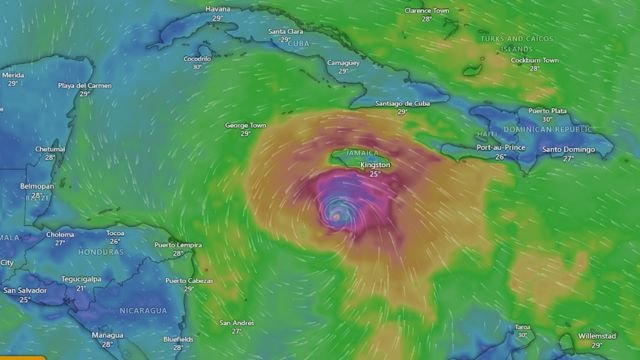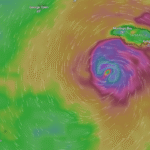If you’ve checked the Weather Channel recently to track Hurricane Melissa, you’re not alone. Millions turn to it during critical moments, whether it’s a looming hurricane, a fast-moving blizzard, or that weird thunderstorm in the middle of October. But beneath the radar maps and live coastal shots, the Weather Channel story is changing. Fast. Ownership, platforms, streaming options, and even the very team delivering your forecasts have shifted behind the scenes. If you’re wondering who actually runs the Weather Channel now, where to watch it, and how it’s handling major events like Hurricane Melissa, let’s break it down. In plain English.
Wait, who owns the Weather Channel now?
Let’s get this part straight first, because it’s a bit messy. The Weather Channel television network that you see on cable or stream on connected TVs is owned by Allen Media Group, which is headed by Byron Allen. He’s been in charge since 2018. That network runs from Atlanta, and it’s the same one you’ve seen meteorologists standing knee-deep in storm surge or snowdrifts for decades. What most people don’t realize is that the Weather Channel app and weather.com website are actually owned by a different company now. That’s right. They were sold by IBM in 2023 to Francisco Partners, a private equity firm. The deal closed on February 1, 2024.
So today, if you’re watching Jim Cantore yelling into the wind on TV, you’re seeing Allen Media’s Weather Channel. But if you’re scrolling through radar loops or getting alerts on your phone through the Weather Channel app, you’re dealing with The Weather Company, now under Francisco Partners. Two different owners, one name that everyone still calls “The Weather Channel.” Confusing? Definitely. But also important, especially when you want to know which part of the brand is behind the forecast you’re trusting during a Category 5 storm.
The Weather Channel and Hurricane Melissa coverage
Hurricane Melissa has become one of the most dangerous storms ever seen in the Caribbean. It’s already reached Category 5 intensity and is being described as the strongest recorded hurricane to ever approach Jamaica. And yes, the Weather Channel is all over it. The TV network is doing what it does best: wall-to-wall coverage, real-time visuals, and expert commentary. Their field teams are positioned close to key landfall zones. They’re showing wind bands arriving, breaking down the storm surge risk, and looping back through critical warnings every few minutes. That repetition, that visual storytelling, is what has always set the Weather Channel apart. During extreme weather, that kind of real-time communication can literally save lives.
Over on the digital side, weather.com is issuing round-the-clock updates on Melissa’s path. Their articles highlight rainfall totals, landslide risk, forward speed concerns, and changes to the storm’s track. They’re using the latest data from the National Hurricane Center, blending it with their own forecasting models. The mobile app is also sending out alerts and offering layered radar visuals, cone projections, and timing for wind arrival. With Melissa threatening historic impact in Jamaica, both arms of the Weather Channel brand have been actively warning users, just through slightly different tools.
This is one of those moments when the dual structure of the Weather Channel actually works. The TV coverage gives you urgency. You hear the emotion in the voices. You see the chaos outside homes. But the app and website give you details. Like exactly how much rain is falling in your parish. Or when the eyewall might cross your area. Used together, they can give you a full, multi-sensory picture of what’s coming. As always though, you should still cross-check everything with your local meteorological office. The Weather Channel is a powerful source, but it’s not a substitute for official local emergency warnings.
How to watch and use the Weather Channel in 2025
If you’ve cut the cord but still want live Weather Channel coverage, good news. The Weather Channel TV network is now available through several streaming options. You can access it on platforms like DIRECTV STREAM, Hulu + Live TV, Fubo, and Frndly TV. There’s also a $2.99 per month connected TV app that lets you watch the live broadcast even without a cable subscription. This is great if you need real-time hurricane coverage in your living room without a full channel package. The subscription is straightforward, and the app also includes some on-demand weather shows.
For those who mostly want the forecast data, radar maps, and alerts, the Weather Channel app and weather.com are still the go-to tools. Basic features are free, but the platform also offers Premium and Premium Pro subscriptions, with pricing around $29.99 per year. Premium users get access to longer-range radar windows, ad-free browsing, and more advanced forecast layers like lightning strike proximity and hourly rain risk. If you’re in an area prone to hurricanes, floods, or wildfires, it’s honestly worth considering. These tools don’t just show what’s happening now, they help you plan for what’s about to.
It’s important to remember that the Weather Channel isn’t just a content brand anymore. It’s an ecosystem. You can get hyper-local alerts on your phone while watching a meteorologist explain surge risk on your TV. You can scroll through forecast maps on your laptop while listening to evacuation updates in the background. That flexibility is the real advantage in 2025. Especially in an era of more frequent and more intense storms.
Why it still matters
The Weather Channel is not perfect. Its centralized model has drawn criticism. In early 2025, Allen Media tried to centralize local weather coverage through Atlanta, a move that sparked pushback from both viewers and meteorologists. People feared they’d lose the nuance of local forecasting. After some backlash, the plan was adjusted, though not abandoned. That kind of consolidation could pose risks if not carefully managed, especially during overlapping disasters like hurricanes, wildfires, and blizzards.
Still, in the middle of a hurricane, there’s nothing quite like seeing a professional meteorologist break down the track on national TV while your phone alerts you to nearby flooding. The Weather Channel has its flaws, but it remains one of the few places where you can see weather coverage that’s both visually powerful and technically informed. Whether you’re glued to the livestream or refreshing radar maps every 10 minutes, the Weather Channel is still very much part of the emergency toolkit for millions.
As Hurricane Melissa barrels toward Jamaica with wind speeds that could change the island’s infrastructure forever, the Weather Channel is doing what it was built to do. Helping people see. Helping them understand. Helping them act.


